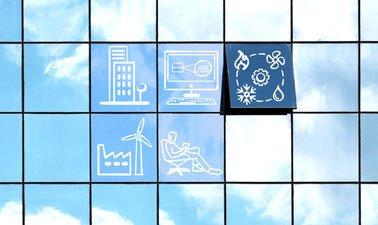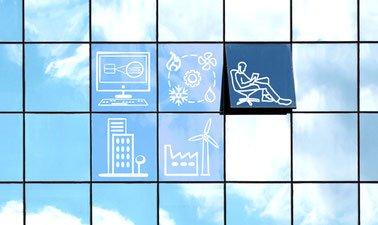Buildings as Sustainable Energy Systems Professional Certificate
People spend more than 80% of their time in buildings, therefore a good thermal comfort and quality of the indoor environment are essential for people’s wellbeing. At the same time, buildings and their energy systems are responsible for around 40% of the worldwide energy consumption and carbon emissions.
In this program you will learn how to design energy efficient and more sustainable buildings whilst improving the thermal quality of their indoor environment.
This Program consists of four courses.
In order to consider how to increase the energy efficiency of new and existing buildings, you will discover the energy needs and thermal behavior of buildings. You will learn to answer questions like: how does solar radiation impact the heating and cooling needs? Is there something like an optimal window size, or optimum insulation or orientation? What is the impact of ventilation on the energy needs? Why do architects sometimes design fully glazed atria oriented to the north?
A building not only has energy needs, but also energy supply. Therefore the second course takes you on a journey through the world of energy conversion and related carbon emissions. You will discover how to convert natural resources into the needed heat, cold and electricity. This course will give you the skills to choose energy systems for low carbon buildings and building stocks.
During the third course you will learn how to master a good indoor thermal comfort and how that closely relates to buildings’ energy systems. You will be able to answer questions like under which conditions is floor heating comfortable, or why does a comfortable temperature also depend on the chosen ventilation system. Or why there will always be comfort complains even in the building design.
Finally, you will discover how to combine energy supply and (ground) storage systems and how to distribute heat, cold and air in buildings. You will know why and when to apply an all-air system, radiators, floor heating or a cooled ceiling. You will understand the processes in air handling units and know how to maximize comfort while making sure the carbon emissions are the lowest possible. You will also discover the basics of how to optimally control all these systems.
What you will learn:
How to make estimations of buildings energy needs by applying the balance principle and using simple public meteorological data; to be able to make informed decisions on how to increase the energy efficiency of new and existing buildings.
About the energy supply in buildings and possible combinations to increase efficiency with e.g. heat pumps, gas burners, cogeneration, solar, fuel-cells, geothermal and aquifer thermal storage.
To design building energy systems be designed accounting for the mismatch between demand and supply in order to ensure low primary energy usage, low carbon emissions or even enable zero carbon buildings and building stocks.
How to master a good indoor thermal comfort and how that closely relates to buildings’ energy systems, in order to size the energy and comfort equipment of the building, which is a must from costs point of view.




